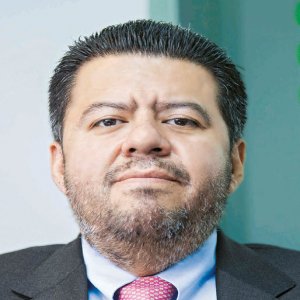Consolidating Mexico's Safety Regulator

STORY INLINE POST
Q: ASEA is 2 years old and fully up and running. What have been the milestones of the regulator’s development?
A: Two years ago we were given the challenge of building and designing a new regulator from scratch. We started out by defining how to cope with the massive mandate of regulating, authorizing and supervising all matters concerning safety and environmental protection for the whole hydrocarbon value chain. We formed a strong philosophy and well-defined mission to guide our decisions, which involved guaranteeing individual safety and environmental integrity while at the same time providing the industry with long-term certainty about the rules and their enforcement. Around that mission, we designed a model to manage risk. In this industry, risk must be managed to avoid accidents and control pollution.
We designed this model around five different riskmanagement pillars. The first was preemptive: the obligation of every operator to work under safety and environmental management systems. The second was the obligation for everybody to have sufficient financial guarantees to cope with the consequences of potential accidents. Third, we addressed the issuing of nonprescriptive technical regulations that would target goals and performance. The fourth pillar of our model was risk-based inspection. This has to do with recognizing that although it would be possible to verify every piece of the country's 60,000km of pipeline we needed to be strategic and actually go where the risks are. The final element was a philosophy around enforcement aimed at incentivizing better performance as opposed to putting people in jail.
Q: What is your proudest achievement of the past two years?
A: One thing I am particularly proud of is the fact that we have managed to stay focused on our original riskmanagement mission. One of the main milestones was the issuing of our environmental and safety management system regulations and the issuing of regulations concerning financial guarantees. Everyone is starting to comply with these rules, which are two cornerstones of our risk-management model. The third is technical regulation oriented to performance.
In the past two years we have published close to 30 different technical regulations that are risk-based and nonprescriptive. At the end of 2016 we published all the regulations for upstream operations, including deepwater in the Gulf of Mexico, which allowed for an active participation in Round 1.4. The rules, mainly inspired by international best practices, were understood and accepted by the market. We have also made good progress concerning risk-based inspections.
Q: What are the priority areas in for the oil and gas industry in terms of safety?
A: Offshore and refineries are the priority areas. We have deployed aggressive mitigation programs to address the main risks associated with those operations. After analyzing those risks, we came to the conclusion that our current model is working well and effectively. Close to 15,000 projects have crossed our desks and I am glad to share that none are currently delayed. We successfully avoided this by adopting our initial mission to guarantee safety and environmental integrity but at the same time being aware that our role is to provide certainty about the rules. The proof of our success lies in the almost US$70 billion the industry has already committed to Mexico.
Q: How did ASEA manage the processing of so many permits?
A: By mid-2016 the Ministry of Finance authorized an increase of 150 people to expand our execution capacity. That was a relief but still not enough. Manpower is only part of the story as new systems, databases and regulations are also important. A relevant example is how we improved turnaround times for approving gas stations. In April 2016, 40 percent of gas station permits were delayed in our system and the environmental assessment took 120 days to complete. Now, after we put together a brief report regarding the environmental impact of a gas station, it takes only 10-20 days to process.
























